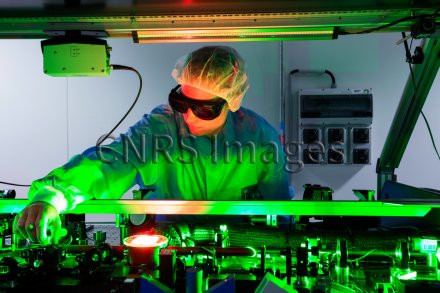Production year
2015

© Jérémy BARANDE/Permission to use granted by Newport Corporation
20150006_0004
Salle pilote du laser Apollon où a lieu son amplification. Un oscillateur femto-seconde génère les impulsions à l'origine du signal du laser et du faisceau de pompe pour l'amplification OPCPA (Optical parametric chirped-pulse amplification) du pilote. En rouge, "un filtre spatial" maintient la qualité optique du faisceau. Opérationnel en 2018, le laser Apollon atteindra 5 pétawatts et sera alors le plus puissant au monde. Il permettra d'explorer de nouveaux pans de la physique, notamment la physique relativiste, c'est-à-dire le fonctionnement de la matière lorsque les particules se déplacent à une vitesse proche de celle de la lumière.
The use of media visible on the CNRS Images Platform can be granted on request. Any reproduction or representation is forbidden without prior authorization from CNRS Images (except for resources under Creative Commons license).
No modification of an image may be made without the prior consent of CNRS Images.
No use of an image for advertising purposes or distribution to a third party may be made without the prior agreement of CNRS Images.
For more information, please consult our general conditions
2015
Our work is guided by the way scientists question the world around them and we translate their research into images to help people to understand the world better and to awaken their curiosity and wonderment.